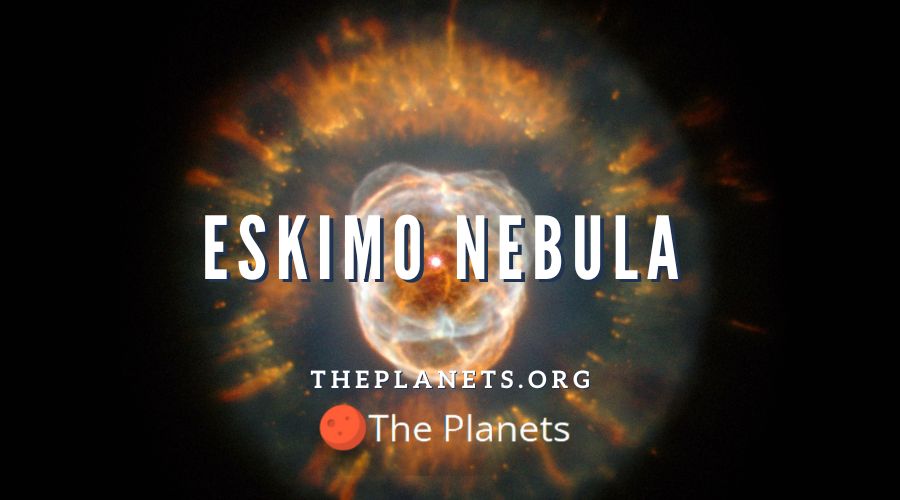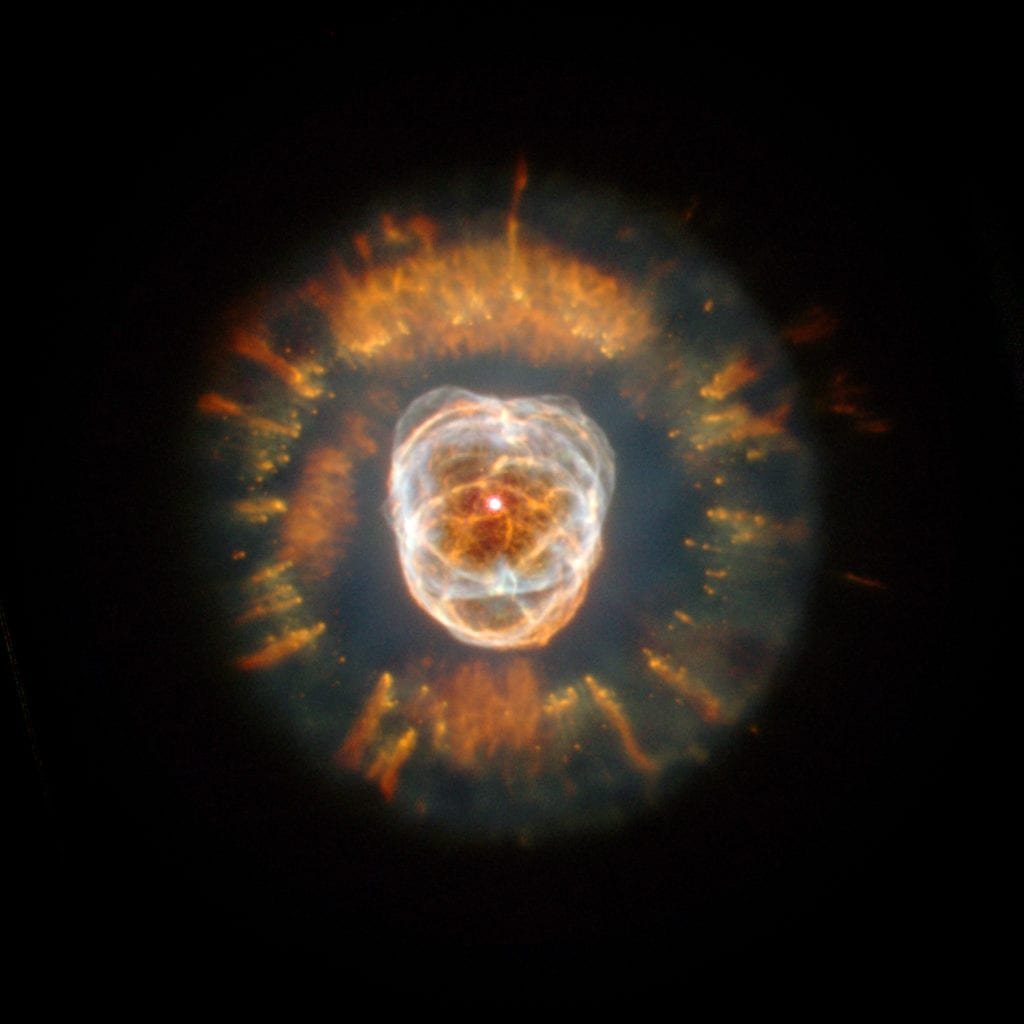
Eskimo Nebula Facts
- The Eskimo Nebula is also called Caldwell 39 or the Clown face nebula.
- The nebula is more than 2,870 light-years from earth.
- William Herschel discovered the nebula in Slough England on January seventeenth of 1786.
- The nebula cannot be seen with the naked eye due to the 10.1 magnitude.
- The nebula can be seen using a small telescope.

The Structure of the Eskimo Nebula
The nebula is incredibly beautiful. The structure is intricate with streamers of gas and shells around a dying sun similar to a star. The best way to view the structure is with a fairly large telescope. This will show some of the details of the Eskimo nebula. There is a ring of objects shaped like a comet embellishing the disc of material. Their tails stream away from the star. The formation began 10,000 years ago because high speed and intense material were expelled into space by the star.
This used up all of the hydrogen located at the core. As the star began cooling and expanding, the growth was hundreds of times in comparison to the original size. The planetary nebula was eventually formed as the outer layers were expelled. Eventually, the central star will collapse resulting in the formation of a white dwarf. William Herschel said this was a star ninth magnitude, the nebulosity was distributed evenly and the middle was pretty bright. He added the phenomenon was remarkable.
The Hubble Space Telescope
A view of the Eskimo nebula was captured with the Hubble Space Telescope at NASA. This was when the nickname Eskimo nebula first began. The astronomers saw a resemblance to a fur parka surrounding a face. Scientists believe a dense ring of material once surrounded the equator of the star. During the red giant phase, this was ejected. The result was the shape of the nebula. The material is moving at 72,000 (mph) miles per hour. This stops the stellar winds from forcing the matter to the equator.
The 900,000 mph winds swept the material underneath the star. This resulted in the creation of elongated bubbles. The bubbles contain filaments of dense matter as opposed to being smooth like the surface of a balloon. Each bubble has an approximate width of half of a light-year with a length of about one light-year. The astronomers are still unsure where the ring’s comet-shaped features came from. One potential theory is the formation of these objects came from a collision of fast and slow-moving gases.
The Spitzer Space Telescope at NASA showed a lot more of the structure in an infrared image than astronomer William Hershel saw through his telescope upon his discovery of the nebula. When a star similar to the sun approaches its final burning of nuclear fuel, it will reach for glory as its life comes to an end. The star’s outer layers have already swollen to about the size of the orbit of the earth at this point. Once it has been blown into space, a planetary nebula will be formed.
The star expels a gas with a bright glow. The surviving stellar core has an ultraviolet light that illuminates the glow from the core. This is referred to as a white dwarf.
The Magnification of the Eskimo Nebula
According to the astronomers, the loss of material due to the winds is common for stars. The winds blow along the rotation axis of the star. This carves out a sometimes rod-shaped or cylindrical cavity. When the structure was viewed from the end, the appearance resembled a ball with an odd structure. The term planetary nebula is slightly misleading. This term began with William Herschel. In addition to the Eskimo Nebula, he had already viewed several round objects similar in shape to a ball.
He believed the appearance of these objects was fairly similar to Uranus. At the time, this planet was a recent discovery. He chose the term planetary in reference to these nebulae. The name planetary nebula is still used today, although it is now known the stellar remains do not have much in common with planets. The only link is certain elements sent back into space may form new planetary systems and stars one day in the future. The Eskimo Nebula can be viewed through 10×50 binoculars, but the appearance will be stellar like and faint.
When changing between averted and normal vision, a twinkling effect can often be seen. The nebula will appear as an extremely small and out of focus star. The bluish-green tint can generally be seen as well. Once the nebula has been located, higher power is required to see the fuzzy encircling disk around the tenth magnitude star. The Eskimo Nebula responds to magnification extremely well due to the brightness of the surface and the compactness of the object. The nebula can be viewed using a scope capable of medium to high magnifications.
This will reveal dark arcs against a mottled background. The finer details of the nebula can be seen using a (UHC) ultra-high contrast filter. The color seems to be an intense bluish-green. It is very common for this kind of object to look like it is blinking on and off.